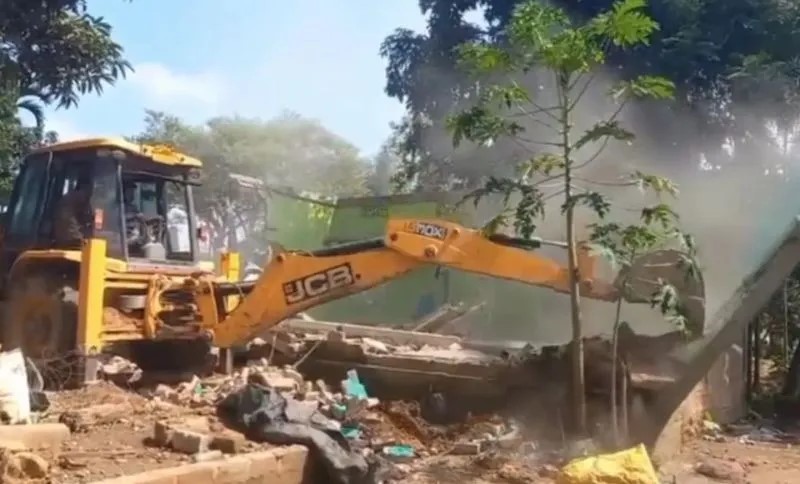
Assam Govt to Launch Eviction Drive in Sribhumi’s Patharkandi: CM Himanta Biswa Sarma

 :
| Updated On: 02-Sep-2025 @ 10:53 am
:
| Updated On: 02-Sep-2025 @ 10:53 amSHARE
The Assam government, under the leadership of Chief Minister Himanta Biswa Sarma, is preparing to launch a significant eviction drive in Sribhumi’s Patharkandi area, with plans extending to other regions of the Barak Valley. Speaking to reporters on Monday, Sarma confirmed that the operation would involve heavy machinery such as excavators and backhoe loaders. He stated that a detailed plan for the eviction was in the works, clarifying that the action would not be limited to Patharkandi but also extend to other encroached areas of Barak Valley.
The Chief Minister linked the eviction drive to the broader issue of illegal migration, which he has repeatedly highlighted as a concern for Assam. Sarma noted that Bangladeshi nationals continue to be detected across the state, with daily reports from district Superintendents of Police (SPs) confirming arrests of individuals entering and residing illegally. However, he acknowledged the challenge of apprehending all such individuals, given the scale of the issue. Despite this, Sarma reassured Assamese citizens, particularly Bengali Hindus, that they remained “100 percent safe” under his government. He emphasized that since his tenure began, Bengali Hindus had not faced significant problems except for issues surrounding Aadhaar, which he claimed had already been resolved. He further declared that, in his view, “every Bengali Hindu, Assamese Hindu—everyone is Hindu,” suggesting a unifying stance against perceived threats from outside migration.
The move also ties into earlier remarks by Assam’s PWD (Roads) Minister, Krishnendu Paul, who in July had signaled the likelihood of a large-scale eviction drive in Sribhumi and the wider Barak Valley. Paul alleged that the encroachments in these regions, especially in ecologically sensitive and protected areas, were not merely for settlement but part of a larger attempt to alter the demographic composition of the region. In particular, Paul highlighted reserve forest areas such as Pataria and Dohaliya, which had seen growing instances of unauthorized occupation. He claimed that such encroachments posed both an environmental and social risk, fueling demographic imbalances that could affect the cultural and political landscape of Assam.
Both Sarma and Paul’s statements reflect the Assam government’s continued focus on tackling encroachment, particularly in areas where illegal settlements are linked to migration concerns. The rhetoric underscores the government’s dual emphasis on protecting indigenous rights and addressing demographic shifts that could arise from unchecked settlements. Sarma’s remarks, which strongly differentiate between illegal migrants and Bengali Hindus, seem aimed at reassuring a significant voter base in the Barak Valley, which has a large Bengali Hindu population historically sensitive to issues of migration and identity.
The government has also made clear that this eviction campaign will be uncompromising. Paul reiterated that there would be no leniency shown toward violators, particularly those occupying reserve forest land. This aligns with Sarma’s broader policy stance of firm action against encroachments, which the government views as both an ecological and demographic threat.
Overall, the planned eviction drive in Sribhumi’s Patharkandi and the Barak Valley marks a continuation of Assam’s stringent policies on land encroachment and illegal migration. While the government frames it as a necessary measure to protect indigenous rights, forest land, and demographic balance, the move is likely to stir debate and controversy, particularly around its humanitarian and political implications.